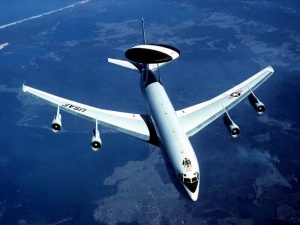MAESTRO Air Traffic Management (ATM) System installed across Europe

Increasing airport capacity is a critical element driving the evolution of ATM systems. More than ever, integrated arrival and departure management is recognised as a key solution to eliminate gridlocks in the air and on the ground and to address cost-effectiveness and green issues.
Co-developed by Egis Avia and the French air navigation service provider (DSNA), the MAESTRO ATM system offers a fully integrated AMAN/DMAN solution for automated support of arrival, departure and runway management. MAESTRO’s qualities have made it the most widely used sequencing and metering system in the world.
Accommodating arrival flows
To accommodate arrival flows, the MAESTRO AMAN function provides support to controllers to properly expedite the incoming traffic to the managed airports and runways and assists them by indicating the optimal separation for flights on final approach. It helps to manage a linear delay instead of using holding patterns. Current operational installations of AMAN have measured capacity gain, reduction of fuel consumption while improving the safety level of arrival operations.
MAESTRO DMAN provides controllers with suggestions (runway, holding point and SID) and alerts to manage departure streams according to various airport configurations. It shares a target take-off time at airport level and feeds the departure runway with a relevant number of aircraft. If necessary the aircraft waits at the stand to prevent runway incursions and long taxiing phase. It compiles the constraints from regional air traffic flow and capacity management (ATFCM), the local airport collaborative decision making (A-CDM) process and satellite airports. The system aims at building a departure sequence while minimising aircraft queues and enables consequently an optimum use of the airport’s capacity.
ADVERTISEMENT
MAESTRO AMAN/DMAN integration is particularly efficient at mitigating airport airside congestion and delays at a regional scale as it enables a unified management of the terminal manoeuvring area (TMA) configuration, with a possible extension to five independent TMAs. MAESTRO also addresses environmental issues by providing a better management of trajectories, thus reducing fuel consumption, CO2 and noise emissions.
MAESTRO globally
Since 1996, when the first AMAN system was operationally used in Copenhagen, Egis Avia has deployed MAESTRO in 17 major airports in nine countries and further developed the product to support its customer base.
The integration of the new departure management function of MAESTRO is ongoing and will be installed at Paris CDG early 2010.
In 2005 MAESTRO was connected to Eurocontrol’s test platform in Bretigny to run traffic simulations at the Paris area scale. It was the largest simulation ever run in Europe and MAESTRO demonstrated its capacity to handle the heavy traffic forecasted for 2015 in Paris-Orly and Paris-CDG TMAs.
In 2005-2006, MAESTRO was integrated into the DSNA DAARWIN platform of the gate-to-gate project in support of real-time simulations to assess the combination between AMAN, ASAS crossing and merging and advanced HMI for arrival sectors.
In 2006-2008, MAESTRO was connected to a THALES EUROCAT-tower system at Toulouse-Blagnac Airport for the EMMA2 project, paving the way for interoperability between DMAN and A-SMGCS. In 2007-2008, for the ASPASIA project, MAESTRO was connected to an Egis Avia SCANSIM ATC simulator to assess the benefits of aircraft derived data for the arrival management function.
For the ongoing MINT and CASSIS II projects, MAESTRO is being adapted to use aircraft FMS data to support controlled time of arrival [CTA] operations. MAESTRO will also be involved in several SESAR projects in the coming years.

